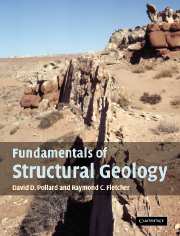Chapter 1 - Motivations and opportunities
Summary
Mt. Hillers, southern Henry Mountains, UT. The mountain is cored by igneous rock and surrounded by upturned beds of sandstone and shale. G. K. Gilbert coined the term “laccolite” for these structures in the late 1870s and proposed models for this process of mountain building based on mechanical principles. Inset: Frontispiece from G. K. Gilbert's Report on the Geology of the Henry Mountains (Gilbert, 1877). To the rear of this illustration the sedimentary strata form the structural dome of Mt. Ellsworth, and to the front the eroded remnant of the dome represents the current topography of this mountain. Photograph by D.D. Pollard.
The sciences do not try to explain, they hardly even try to interpret, they mainly make models. By a model is meant a mathematical construct which, with the addition of certain verbal interpretations, describes observed phenomena. The justification of such a mathematical construct is solely and precisely that it is expected to work (quote from John von Neumann; Gleick, 1987, p. 273).
In this chapter we motivate the study of structural geology by introducing selected topics that illustrate the extraordinary breadth of interesting problems and important practical applications of this discipline. For example, we use the Imperial Valley earthquake of 1979 along the San Andreas Fault zone to describe techniques for geological hazard analysis. In a second example the lineaments visible in radar images of Venus provide the data for investigating tectonic processes on a planet other than our own.
- Type
- Chapter
- Information
- Fundamentals of Structural Geology , pp. 1 - 24Publisher: Cambridge University PressPrint publication year: 2005



